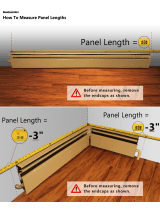
F3 Field Service Manual
Page 10
Figure 7: Connecting the Earset
● Switch the F3 on and confirm the Threshold Tone is audible.
● If an earset ‘speaker on’ (4523-0027) is being tested, check that tones can also be
heard from the detector loudspeaker.
● If an earset ‘speaker off’ (4523-0025), identified by green band on earset cable near
the plug is being tested, check that no tones can be heard from the detector
loudspeaker.
NOTE
If the detector being serviced is an F3L configuration (contains LEDs on handle assembly),
the LEDs should illuminate when using an earset ‘speaker on’ and extinguish when using an
earset ‘speaker off’.
● If a fault is discovered, refer to Section 4 for faultfinding procedures.
g. Alarm Tone Test. This test will produce an alarm when either the red endcap or
yellow endcap is dislodged. This is a safety feature designed to ensure the detector
operates at the correct level of sensitivity. To conduct the test:
● With a red or yellow endcap fitted and the detector switched on, remove the endcap
and confirm that a continuous cycling alarm tone is produced.
● If an alarm tone does not occur refer to Section 4 for faultfinding procedures.
NOTE
The red and yellow endcaps are detected by the electronics pack due to magnets located
within the endcaps. The black endcap has no magnets and represents the default sensitivity
of the F3. This means the black endcap, if dislodged, will not cause an alarm because the
detector is already operating at the default sensitivity.
h.
F3L - LED and Volume Control Test.
For the F3L configuration, LED and volume
control is tested as follows:
● Turn on the detector with the black endcap fitted.
● Conduct the test piece test and note the number of LEDs that light up and the tone
and volume of the audio.
● Increase the volume to maximum by pressing the
button five times listening for the
longer beep on the fifth press.
● Recheck the detector with the test piece, confirming an increased number of LEDs
light up and the tone is louder.
● Decrease the sensitivity to normal by pressing the Θ button five times listening for the
double beep on the fifth press. This indicates the detector sensitivity has returned to
its default setting.






















